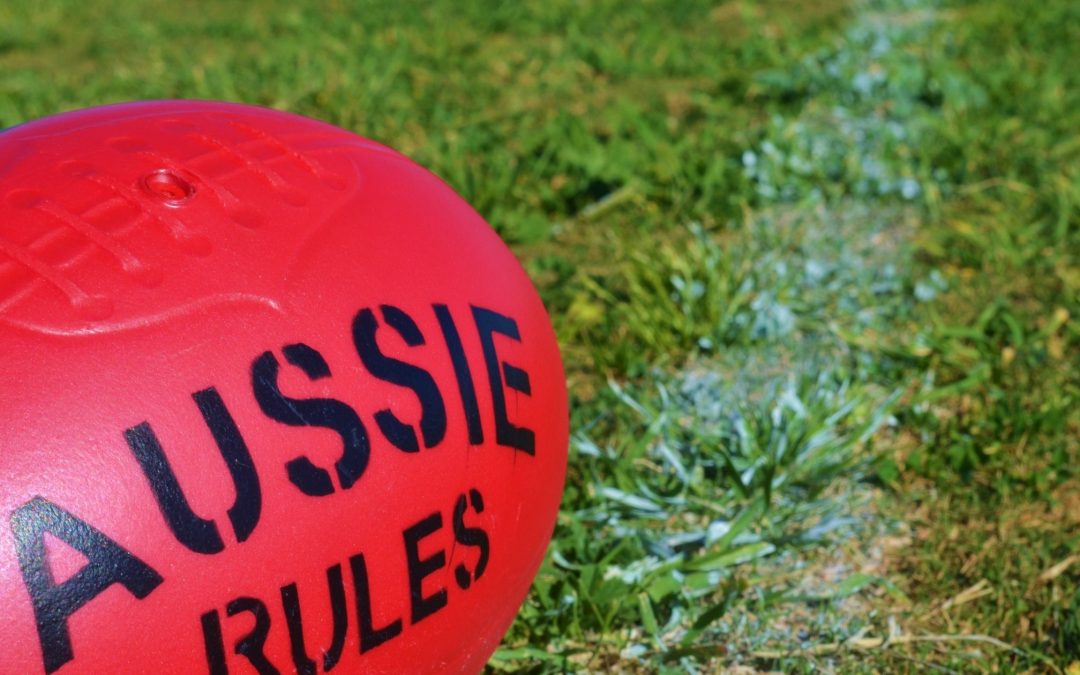By Darcy Meesen, Physiotherapist.
Concussion awareness and player management is improving at elite sporting levels, and it seems to be slowly filtering down into our weekend teams, but we can do better!
The AFL have actually produced some fantastic resources that local clubs can use, but not many seem to be aware of them. I’ll post the link at the bottom, but will summarise the key points for you here.
First of all…What is concussion?
Concussion has been described as being on the ‘milder spectrum’ of traumatic brain injuries. Generally, it is a result of a knock to the head, where the brain sloshes around into the skull, causing injury to the brain. Usually the effects are temporary, with most concussions fully resolving within 10-14 days. However, in rare cases, symptoms can last weeks or even months, this is known as Post-Concussion Syndrome (PCS).
What are the signs/symptoms?
As different parts of the brain control different functions, each concussion is different from the next. People experiencing concussion may present with any of the following symptoms;
 Headache
Headache- Nausea
- Blurred vision
- Balance problems or dizziness
- Feeling“dinged”or“dazed”
- “Don’t feel right”
- Sensitivity to light or noise,
- More emotional or irritable than usual
- Sadness, nervous/anxious
- Neck pain
- Feeling slowed down,feeling like in a fog
- Difficulty concentrating or difficulty remembering
But I’m just a parent/coach/first aider…I’m not a doctor…what can I do about it?
This is the fantastic part about the resources provided by the AFL. All you have to do as a parent or club person is identify the indicators of a concussion event, as listed in the Concussion Recognition Tool (available at the link below). If any are present; deem it a concussion, rule the player out for the rest of the game and refer them on for assessment by a trained medical practitioner.
It’s important to note that concussion symptoms can often be delayed for minutes or even hours after the assault to the head, hence why it’s so important to recognise when a concussion might’ve occured, rather than waiting until symptoms arise.
Remember; IF IN DOUBT, SIT THEM OUT!!…you’d much rather rule someone out of a game that didn’t have a concussion, than let someone play who does have one. One game of sport is never more important than a person’s brain.
Please note: if the injured patient presents with any red flags- neck pain, double vision, weakness, tingling, burning sensation in arms or legs, severe/worsening headache, seizures/convulsions, loss of consciousness, vomiting, agitation or worsening conscious state… call 000 for an ambulance immediately and follow first aid principles
Return to school/work/play.
Here’s a simple return to play pathway below.
Remember, to advance to the next stage the player must be able to complete the tasks SYMPTOM FREE and remain symptom free for the following 24 hrs.
If someone does show symptoms at any point, then they must drop back a stage.
Stage 1: Deliberate physical and cognitive rest (24-48hrs)
Stage 2: Once symptom free for 24 hrs can return to work/school (if duties are light and non provoking of symptoms)
Stage 3: Light aerobic exercise (walking, stationary bike, swimming)
Stage 4: Light non-contact drills (running and skills practice)
Stage 5: More complex non-contact drills (and maybe some LIGHT resistance training)
Stage 6: Full contact drills and resistance training (only with a medical clearance)
Stage 7: Return to competition (play)
Can I help prevent concussions?
The reality is that sometimes head knocks are inevitable in competitive contact sports. To date the best pieces of advice for concussion prevention are;
 Make mouthguards compulsory for all training and playing (dentally fitted laminated mouthguards, not the cheap and nasty boil and mould ones). There’s now evidence suggesting they can reduce your risk of concussion- as well as reducing the risk of facial injuries.
Make mouthguards compulsory for all training and playing (dentally fitted laminated mouthguards, not the cheap and nasty boil and mould ones). There’s now evidence suggesting they can reduce your risk of concussion- as well as reducing the risk of facial injuries.- Teach kids from a young age how to position themselves to best protect their body and head when competing in their chosen contact sport. Make it a vital part of your training drills so that these techniques become instinctual.
What about helmets?
As far as the latest evidence suggests, helmets are not recommended for sports like football and rugby as a preventative measure for concussion. The reasons for this are too complex for the purpose of this short blog. Put simply, preventative helmet use does not reduce your risk of concussion in contact sports. Though they may have a role if returning from a facial injury.
For more in depth content and resources please visit https://www.afl.com.au/afleducation/concussion
Also, feel free to call BodyLab.health and ask us for further guidance with your club’s concussion protocols, or if you need help in managing your own concussion.

